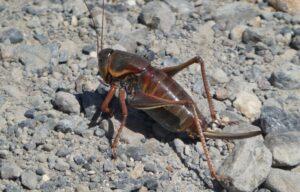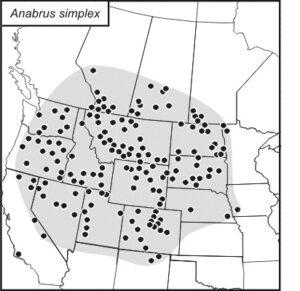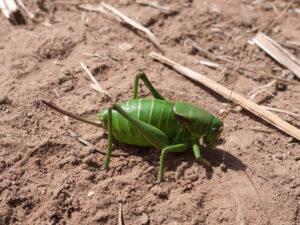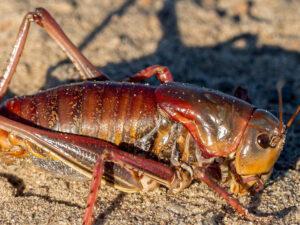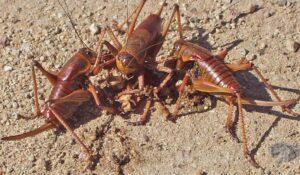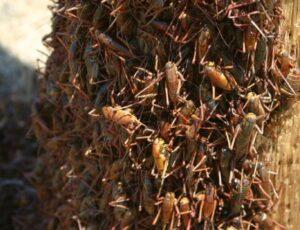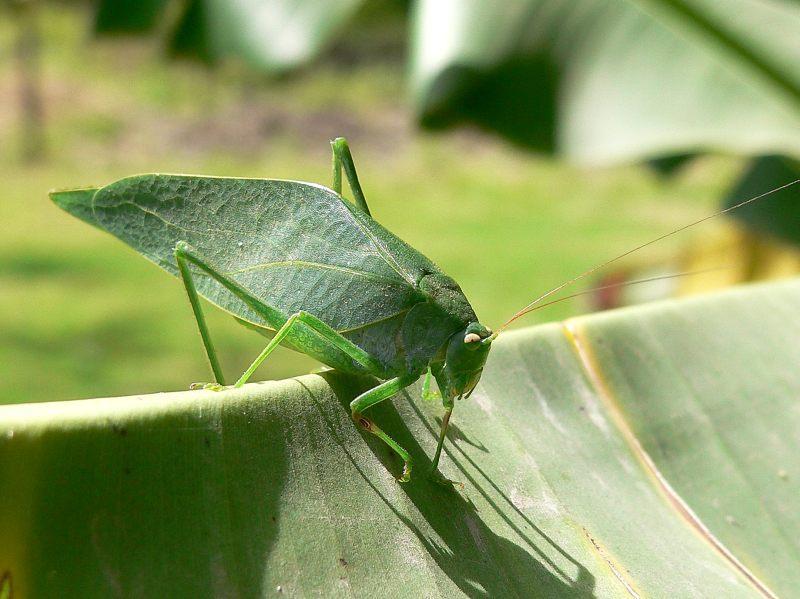Mormon Cricket (Anabrus simplex)
Updated on
28/10/2022Mormon cricket, belonging to the Tettigoniidae family and Anabrus genus, is a species of shield-backed katydid and not cricket. They are called ‘crickets’ because of the cricket-like chirping sounds made by the males of this species.
When they migrate in large groups, Mormon crickets become serious agricultural pests and can also cause traffic hazards.
Scientific Classification
- Class:Insecta
- Order:Orthoptera
- Suborder:Ensifera
- Family:Tettigoniidae
- Subfamily:Tettigoniinae
- Tribe:Platycleidini
- Genus:Anabrus
- Species:A. simplex
Conservation Status
Description
Adults grow around 1.5 inches to 2 inches in size. Their appearance changes with high population densities (like locusts), and variations in coloration are the most visible of these changes. Solitary individuals are typically green or purple, while when swarming, their color changes to a dark brown, red, or black.
Their modified prothorax or ‘shield’ (the part behind the head) may have colored markings with a striped abdomen.
Females have a long ovipositor (the long pipe-like organ used for egg-laying) curved upwards. During the mating season, they display a spermatophore (small sack for holding sperms).
Both males and females have a pair of long antennas.
Distribution: Throughout the western regions of North America
Habitat: Rangelands, especially those with sagebrush and forb growth
Do They Bite: No
Lifespan: A few months
Predators: Coyote, small rodents, California gulls, crows, and birds of prey like the western red-tailed hawk and turkey vulture; the horsehair worm parasitizes them
Behavior and Characteristics
Diet
These katydids have a varied diet, including plants like sagebrush, grass, and leaves, with a special preference for forbs. They can also eat smaller insects and even dead or injured Mormon crickets. This cannibalistic behavior may be to fulfill the protein and salt requirements of their body.
Since swarming groups develop locust-like behavior, they feed on grain crops, vegetables, and fruit trees, destroying fields and gardens.
Migration and Swarming
Mormon crickets are often solitary or live and move in small groups or bands. Sometimes, smaller groups band together, causing population explosion (up to 100 individuals/sq.m.) and infestation on a large scale where millions of individuals migrate together by hopping or crawling. This may be a strategy to avoid being eaten by each other.
They move during the daytime, traveling up to two kilometers a day in favorable conditions when the temperature is around 65-95°F and the skies are clear. On hot, cold, or cloudy days, they take shelter under trees and vegetation.
Like locusts, these migrating insects are voracious feeders, destroying fields, gardens, farmlands, and vineyards. These infestations can last from a few months to decades. The most recent case of such infestation started in Northern Nevada in 2003.
The reason for such infestation is not known, but it is believed to be associated with certain weather conditions.
Life Cycle
1. Egg Stage
Females lay up to 100 eggs under the soil surface, each looking like a single purplish rice grain. The eggs usually hatch when the soil temperature is around 40°F, which happens around spring. Still, sometimes they may take up to 5 years for the ideal conditions in which to hatch.
2. Nymph Stage
The nymphs molt 7 times, so they go through 7 instar stages before adulthood. It takes 60-90 days from hatching for Mormon crickets to become adults.
3. Adult Stage
The new adults can begin to breed after 10-14 days.
Getting Rid of Mormon Crickets
It is difficult to get rid of large swarms, and due to the high population, spraying them with insecticides also destroys the crop. So, carbaryl baits are the most common method used for killing them.
Physical barriers may also work to stop these flightless insects from entering farmlands and gardens.
FAQs
They take their name from the incident with the Mormon settlers where these ‘crickets’ attacked their spring crops and threatened their food supplies until the ‘miracle of the gulls’ happened. Hundreds of California gulls swarmed to eat the insects and save the settlers.
Native Americans used to eat these insects as a source of protein, but there is no record of their being eaten in recent times.
Source
townnews.com, thewildepisode.com, orthsoc.org, inaturalist.ca, static.wixstatic.com, feedipedia.org, ewscripps.brightspotcdn.com




